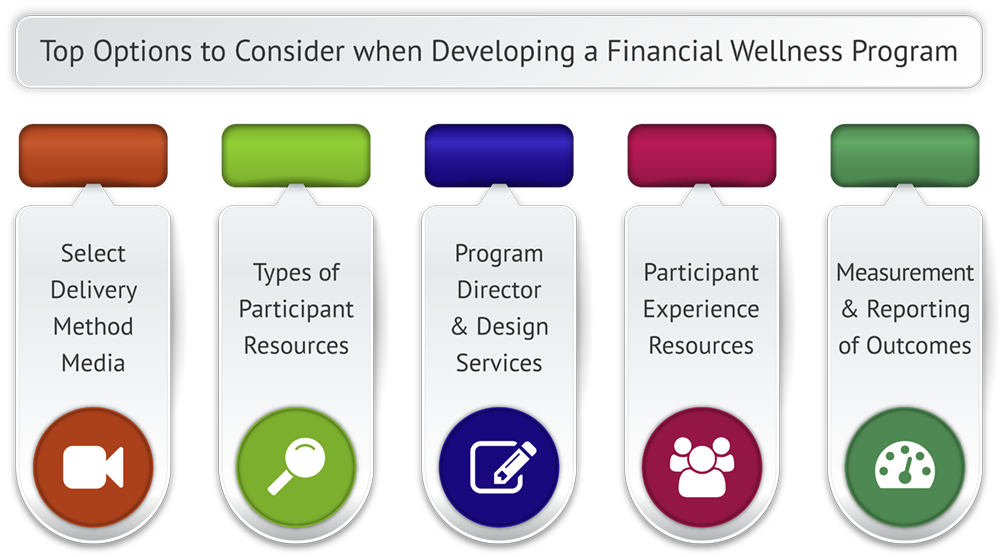Financial Wellness Programs in the Workplace: Why and How
Today’s workers are called upon to navigate a complex financial landscape and many people are experiencing deep, ongoing stress over money issues. Unfortunately, they do not leave their problems at home. That’s why an increasing number of employers have begun to offer financial wellness programs in the workplace.
Achieving financial wellness is a journey, one toward which each individual follows a unique path. But the general definition of financial health can be stated in terms common to all of us: the ability to successfully manage day-to-day finances, be prepared to meet unexpected financial shocks, and save for the future.

Defining the Problem: How Financial Wellness in the Workplace Affects Employees, Employers
Worker financial problems directly affect the employer’s bottom line – they erode productivity, hurt performance, and increase absenteeism. Stress has negative impact on workers’ health, both physical and mental. Decreased wellness in turn factors into benefit costs: the price of providing healthcare programs is increasing at a disturbing rate. Clearly it’s in a company’s best interests to head these issues off by promoting financial wellness in the workplace.
Benefits of Financial Wellness Programs in the Workplace
Financial wellness programs in the workplace have powerful opportunity to reduce employee stress, which has multiple benefits for both the workers and the company. More financially healthy employees feel more engaged, have higher job satisfaction, and are demonstrably more productive. And when they feel some relief from financial stress by achieving higher financial wellness, they’re less likely to need time off to handle money problems or recover from stress-related physical ailments.
Moreover, employees often have the opportunity – and the obligation – to make personal finance decisions at work, such as choosing between options for health care coverage, life insurance, and retirement plans. Providing money management training can steer them toward the best choices to secure their individual futures.
On the employer’s side of the equation, the link between improved financial wellness and higher employee productivity clearly demonstrates effect on the company’s bottom line. But there are less obvious benefits to the employer as well, including lower benefit costs, improved company culture and morale, and higher employee loyalty – which may reduce turnover rates. The cost-benefit ratio of promoting financial wellness in the workplace is favorable, with an estimated ROI between $1 and $3 for each dollar invested in the program. Companies that offer such programs show that they genuinely care about their workers’ well-being.
Best Practices for Financial Wellness in the Workplace
Employers searching for workplace financial wellness programs will discover many different solutions. The decision between programs and delivery options should be data-driven, so an employer may be best served by taking a “test and learn” approach to find out which methods are best suited to its unique work environment. Performing a baseline assessment to determine the knowledge base from which employees are starting is an important first step which can be accomplished through surveys, pilot programs, or collecting responses to a brief financial plan. Then you can begin designing an appropriate workplace financial literacy campaign.
Every workplace is unique, so the question regarding which program components of a work-based financial literacy workshop will best serve employees’ needs has an individualized answer. However, certain features have proven promising best practices across a variety of organizational environments: encouraging peer-to-peer support, leveraging technological platforms, choosing high-quality content and resources with practical applicability, gamification, and continuing follow-up education all have demonstrated positive results.

